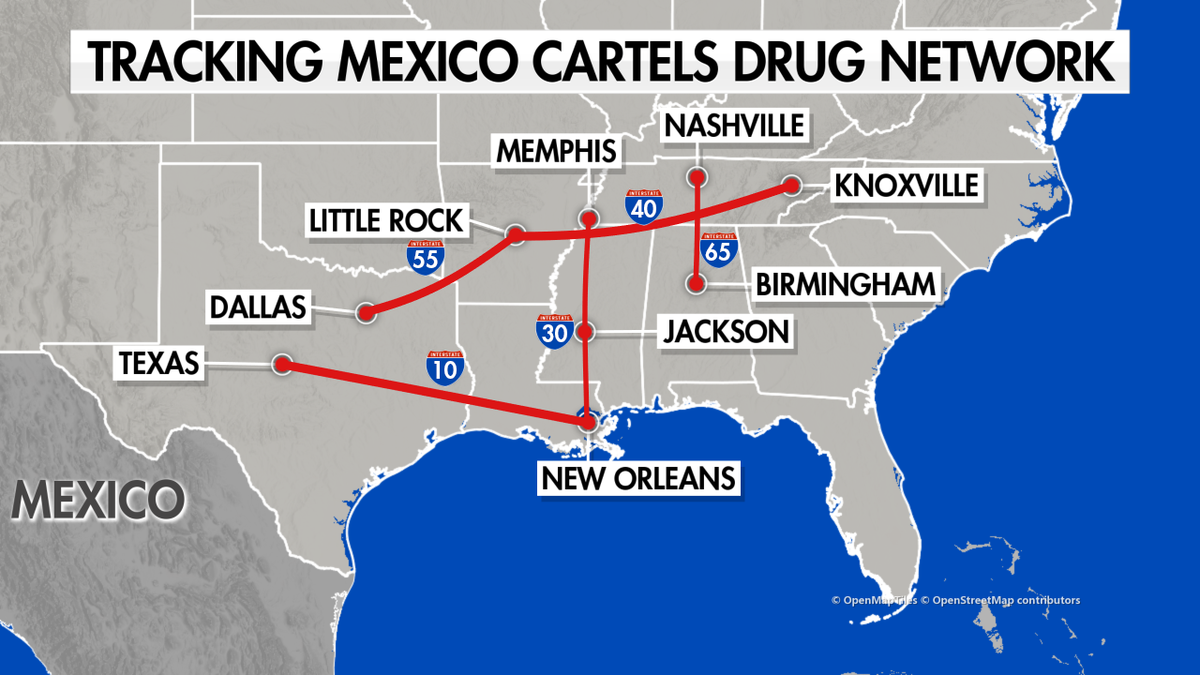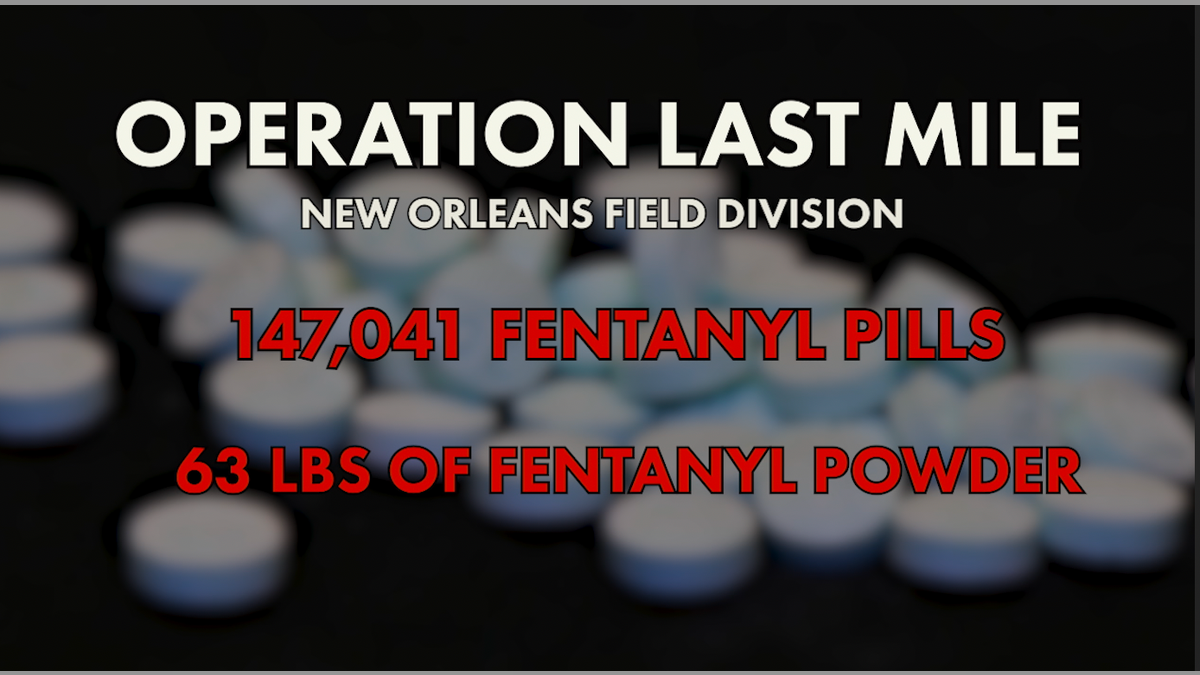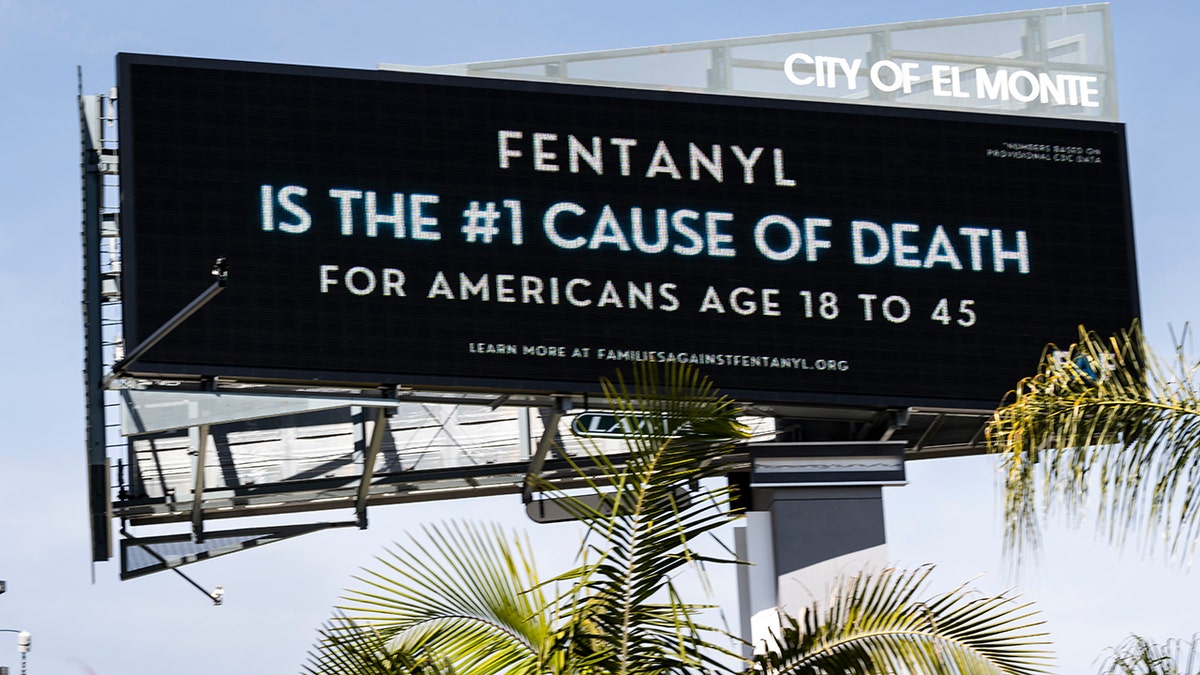The Drug Enforcement Administration (DEA) is prioritizing its efforts to disrupt the Mexican cartels' drug distribution networks within the United States, as the majority of fentanyl-laced drugs originate from the southern border.
Special Agent in Charge Brad Byerley of the DEA's New Orleans Field Division, which covers Louisiana, Mississippi, Arkansas, and Alabama, identifies the Jalisco New Generation Cartel and the Sinaloa Cartel as the primary drivers of the ongoing drug overdose crisis. He highlights the strategic importance of the greater New Orleans area as a distribution hub, despite its distance from the Mexican border. Major interstates, including I-10, I-55, I-30, I-40, and I-65, serve as key drug trafficking routes, facilitating the movement of narcotics to local distributors throughout the South and the rest of the U.S.

Interstates far from the border are utilized for drug trafficking across the U.S. (Fox News)
Operation Last Mile, a recent year-long DEA investigation, led to the seizure of over 147,000 fentanyl pills and 63 pounds of fentanyl powder within the New Orleans Field Division alone—an amount Byerley describes as sufficient to devastate the entire New Orleans metro area. The operation targeted the final stage of the distribution chain, connecting cartels to local distributors.

Operation Last Mile, conducted between May 2022 and May 2023, resulted in substantial fentanyl seizures. (Fox News)
Nationally, the DEA's efforts resulted in 3,337 arrests of drug distributors and dealers operating at the local level, along with the confiscation of nearly 44 million fentanyl pills and over 6,500 pounds of fentanyl powder.
However, despite these successes, a significant quantity of fentanyl-laced drugs continue to reach U.S. cities. Dr. Charles Preston, the coroner of St. Tammany Parish, Louisiana, witnesses the tragic consequences of this influx. He emphasizes the urgent need for enhanced border security to stem the flow of these deadly substances. In St. Tammany Parish, fentanyl was involved in 32 out of 48 overdose deaths as of May 12 of this year, and in 91 out of 127 overdose deaths in 2022.

A billboard raises awareness about the fentanyl crisis. (Paul Bersebach/MediaNews Group/Orange County Register)
Dr. Preston also points to the emergence of increasingly potent and lethal fentanyl analogs, which pose a significant challenge for detection through routine lab tests. He further highlights the growing threat of nitazenes ("ISO"), a new class of powerful synthetic opioids. The constant evolution of these drugs, driven by profit motives, presents a daunting challenge for law enforcement and public health officials.

The DEA's seizures of fentanyl pills and powder were substantial. (JOHANNES EISELE/AFP via Getty Images)
Through his participation in the Regional Organized Crime Information Center, Dr. Preston collaborates with law enforcement agencies to track the spread of these dangerous substances. This information sharing enables proactive interventions to disrupt drug trafficking activities.
In addition to interstates, social media has become a major facilitator of drug trafficking, described by the DEA as a "super highway" for drug deals. Operation Last Mile revealed drug transactions occurring across 45 different social media platforms. This accessibility makes anyone with a social media presence a potential victim of the cartels, underscoring the pervasive nature of the fentanyl crisis.
Comments(0)
Top Comments